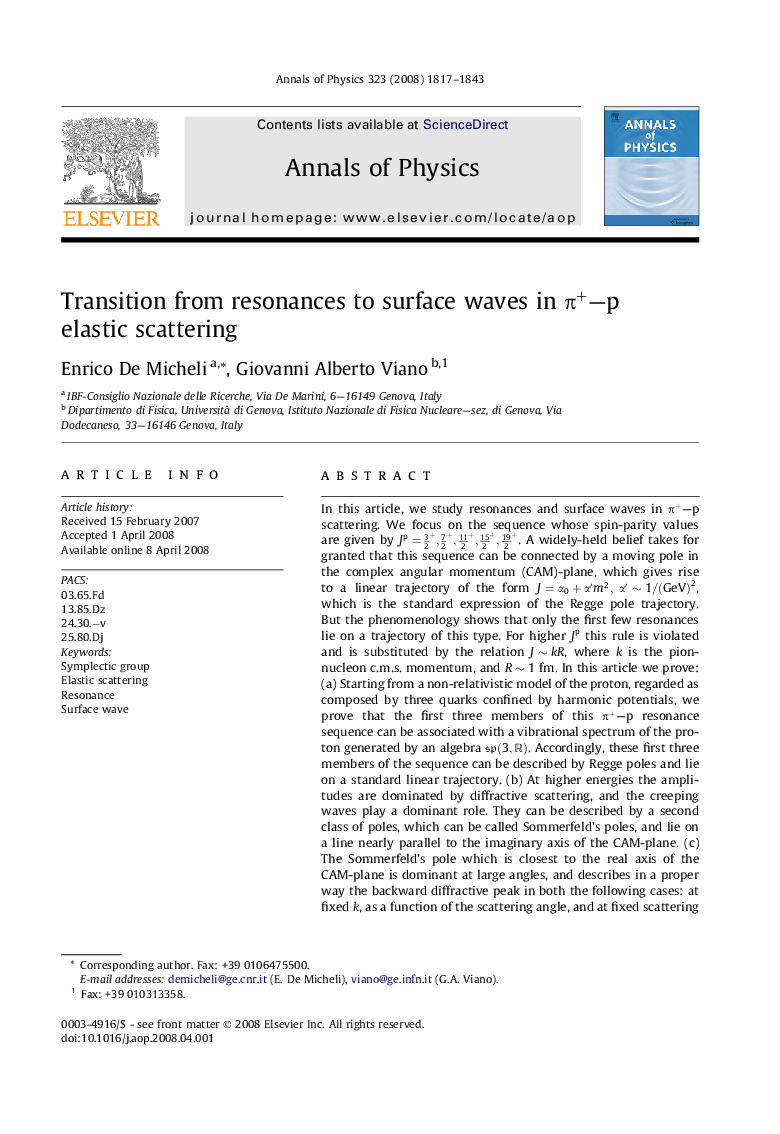| کد مقاله | کد نشریه | سال انتشار | مقاله انگلیسی | نسخه تمام متن |
|---|---|---|---|---|
| 1855241 | 1529936 | 2008 | 27 صفحه PDF | دانلود رایگان |
عنوان انگلیسی مقاله ISI
Transition from resonances to surface waves in Ï+-p elastic scattering
دانلود مقاله + سفارش ترجمه
دانلود مقاله ISI انگلیسی
رایگان برای ایرانیان
کلمات کلیدی
موضوعات مرتبط
مهندسی و علوم پایه
فیزیک و نجوم
فیزیک و نجوم (عمومی)
پیش نمایش صفحه اول مقاله

چکیده انگلیسی
In this article, we study resonances and surface waves in Ï+-p scattering. We focus on the sequence whose spin-parity values are given by Jp=32+,72+,112+,152+,192+. A widely-held belief takes for granted that this sequence can be connected by a moving pole in the complex angular momentum (CAM)-plane, which gives rise to a linear trajectory of the form J=α0+αâ²m2,αâ²â¼1/(GeV)2, which is the standard expression of the Regge pole trajectory. But the phenomenology shows that only the first few resonances lie on a trajectory of this type. For higher Jp this rule is violated and is substituted by the relation Jâ¼kR, where k is the pion-nucleon c.m.s. momentum, and Râ¼1 fm. In this article we prove: (a) Starting from a non-relativistic model of the proton, regarded as composed by three quarks confined by harmonic potentials, we prove that the first three members of this Ï+-p resonance sequence can be associated with a vibrational spectrum of the proton generated by an algebra sp(3,R). Accordingly, these first three members of the sequence can be described by Regge poles and lie on a standard linear trajectory. (b) At higher energies the amplitudes are dominated by diffractive scattering, and the creeping waves play a dominant role. They can be described by a second class of poles, which can be called Sommerfeld's poles, and lie on a line nearly parallel to the imaginary axis of the CAM-plane. (c) The Sommerfeld's pole which is closest to the real axis of the CAM-plane is dominant at large angles, and describes in a proper way the backward diffractive peak in both the following cases: at fixed k, as a function of the scattering angle, and at fixed scattering angle θ=Ï, as a function of k. (d) The evolution of this pole, as a function of k, is given in first approximation by JâkR.
ناشر
Database: Elsevier - ScienceDirect (ساینس دایرکت)
Journal: Annals of Physics - Volume 323, Issue 8, August 2008, Pages 1817-1843
Journal: Annals of Physics - Volume 323, Issue 8, August 2008, Pages 1817-1843
نویسندگان
Enrico De Micheli, Giovanni Alberto Viano,